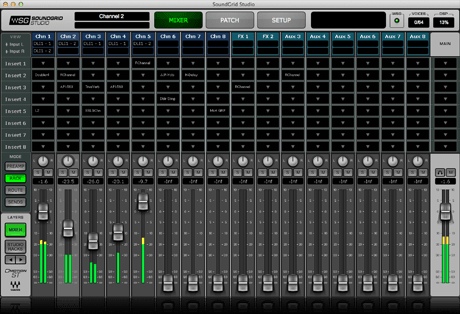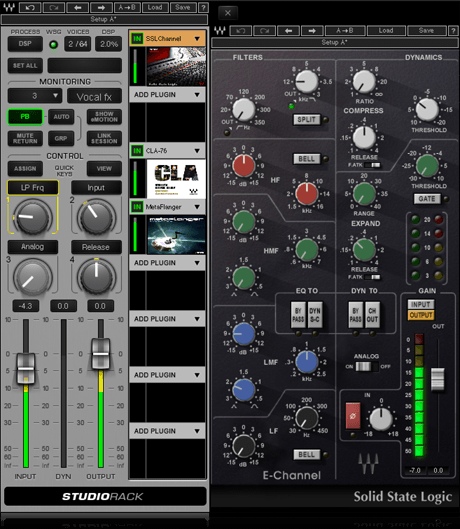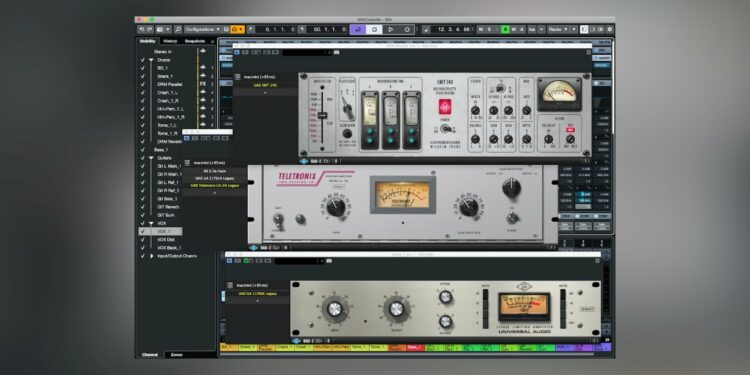- Soundgrid server своими руками
- Waves Audio SoundGrid Studio System — открытая платформа
- AudioGridder превратит любой компьютер в сетевой DSP-сервер для работы с плагинами
- Бесплатный сервер обработает аудио через сеть и снимет нагрузку с основного студийного компьютера.
- Soundgrid server своими руками
- DIY compatible Waves Soundgrid Server
- Help Support GroupDIY:
- Whoops
- Attachments
- dasnevestheo
- Eliani
- Tubetec
- Tubetec
- Whoops
- Tubetec
- cyrano
- Tubetec
- cyrano
- cyrano
- Tubetec
- Attachments
- Whoops
- Whoops
- Tubetec
- cyrano
- Tubetec
Soundgrid server своими руками
Waves Audio SoundGrid Studio System — открытая платформа
Компания Waves Audio представила открытую платформу SoundGrid Studio System, которая легко интегрируется со всеми DAW и SoundGrid-совместимым оборудованием ввода-вывода. С SoundGrid Studio System пользователи смогут запускать практически неограниченное количество плагинов, работать с максимальным количеством эффектов при почти нулевой задержке, подключать все компоненты через централизованный хаб, а также работать в сети с несколькими DAW. Кроме того, система совместима с плагинами от Waves и третьих фирм.
SoundGrid Studio System включает следующие компоненты :
SoundGrid Studio Application — бесшовно интегрируется со всеми DAW и SoundGrid-совместимыми блоками ввода-вывода, обеспечивая широкие возможности для установок любого размера — от одной DAW с одним SoundGrid I/O до целой сети, состоящей из хост-компьютеров, модулей ввода/вывода и серверов SoundGrid DSP.
eMotion ST — микшерный компонент SoundGrid System. Интегрируется с StudioRack и позволяет пользователям запускать SoundGrid-плагины для мониторинга с низкой задержкой и дублирования вне DAW
- 8 входных каналов, 64 входа из StudioRack
- 2 стереоэффекта, 6 стерео AUX шин/возвратов, главная шина микса
- 8 инсерт-слотов на канал для SoundGrid-плагинов
- Подключение нескольких SoundGrid-совместимых устройств и хостов
StudioRack Virtual Plugin Rack — виртуальная стойка плагинов, предназначенная для объединения плагинов в цепочки и перекладывания обработки плагинов на сервер SoundGrid DSP. Плагин StudioRack открывается в качестве инсерта на любом канале, позволяя пользователям запускать цепочки до восьми плагинов на каждую стойку, с возможностью направления обработки на процессор ПК или на сервер SoundGrid DSP
- Совместимость с Waves-плагинами и плагинами сторонних разработчиков
- Соединяет Pro Tools HDX DSP и сервер SoundGrid DSP для обработки плагинов с низкой задержкой во время записи
- Интеграция с eMotion ST
Источник
AudioGridder превратит любой компьютер в сетевой DSP-сервер для работы с плагинами
Бесплатный сервер обработает аудио через сеть и снимет нагрузку с основного студийного компьютера.
Разработчик Андреас Поль придумал решение, которое снимает нагрузку с компьютера при работе с большим количеством плагинов и обработок. С помощью созданной Полем программы AudioGridder пользователи могут перенести всю обработку плагинами на другой компьютер в сети, выступающий в роли выделенного DSP-процессора.
Программное обеспечение AudioGridder представляет собой бесплатный DSP-сервер, работающий в локальной сети. Программа состоит из плагина для основного студийного компьютера и серверной утилиты, устанавливаемой на компьютер, который станет DSP-сервером в сети. Плагин выпускается в форматах VST3 и AU, и работает внутри любой современной DAW. Серверная часть также совместима с VST3 и AU-плагинами.
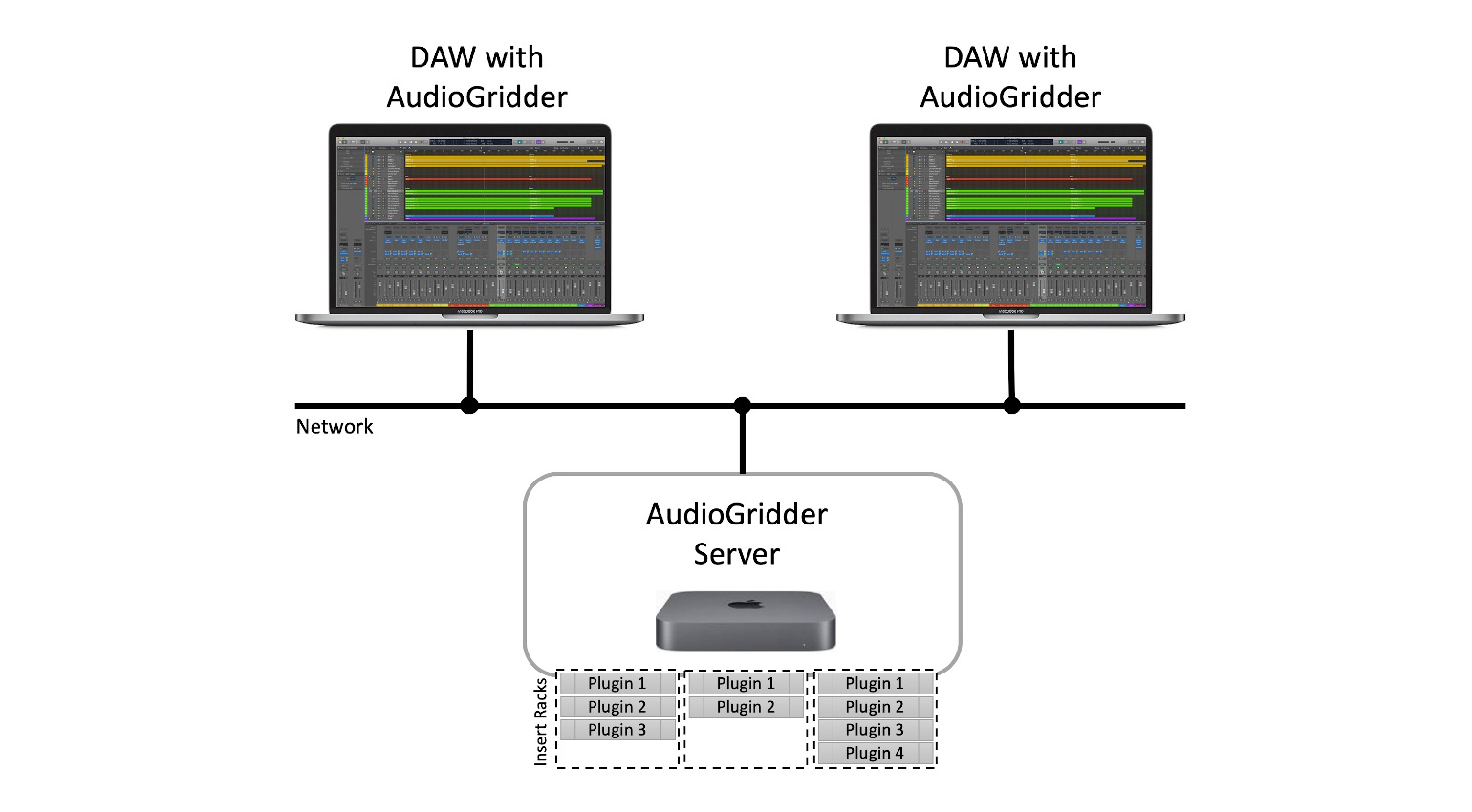
Для использования AudioGridder пользователь должен установить плагин на основной студийный компьютер и развернуть серверную часть. Все используемые плагины должны быть установлены на компьютер, выступающий в роли DSP-сервера. После указания сетевого адреса и сканирования библиотеки, пользователю достаточно запустить плагин AudioGridder на дорожке в DAW, а затем выбрать доступные для использования с сервера плагины.
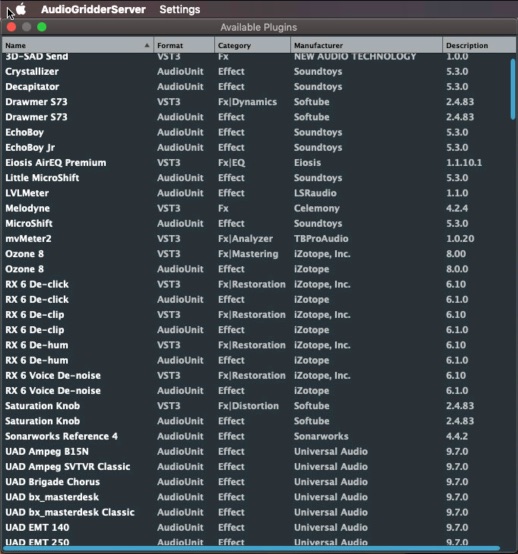
Андреас рассказывает, что вся обработка происходит на стороне второго компьютера. Плагин AudioGridder отсылает на сервер исходное аудио, а затем забирает с него обработанный сигнал в режиме реального времени. Для эффективной работы Поль советует использовать гигабитное проводное сетевое подключение, чтобы снизить нагрузку на канал и максимально уменьшить задержки в передаче данных. Вместе с тем разработчик отмечает, что работа в беспроводном формате с меньшей скоростью также возможна.

AudioGridder пока что существует только в версии для macOS, разработка версии для Windows значится в планах Андреаса. По словам создателя программы, для организации DSP-сервера вполне подойдёт старый Mac mini с процессором уровня Core i5/i7 второго и третьего поколений. Вместе с тем AudioGridder можно использовать и в рамках Hackintosh, собрав более производительную станцию. Дополнительно отмечается возможность работы с несколькими DSP-серверами одновременно.
AudioGridder распространяется бесплатно через страницу проекта на GitHub. Для использования программы необходим любой Мак с установленной macOS 10.14 или 10.15. Устанавливаемый в DAW плагин распространяется в форматах VST3 и AU и совместим только с 64-битными хостами и программами для записи музыки.
Источник
Soundgrid server своими руками
Насколько я знаю, это решение подходит только для работы с плагинами от Waves. Или я ошибаюсь?
Но ведь можно организовать работу с любыми плагинами и без этого дополнительного узкоспециализированного «сервера», используя аудиоинтерфейс с небольшой задержкой и, например, Reaper в качестве хоста для плагинов.
Это уже давно успешно реализовано и подробно описано на дружественном форуме rmmedia
[Ссылки могут видеть только зарегистрированные пользователи. ]
[Ссылки могут видеть только зарегистрированные пользователи. ]
Если ссылки на этот замечательный форум сейчас запрещены здесь, то прошу администратора удалить моё сообщение. ))
rew432, просто вставьте вместо * rmmedia точка .
Или просто зарегистрируйтесь на этом форуме — там в основном общаются «студийщики», но и для нас там очень много интересного и полезного.
Интересно, почему «вытирает» ссылки. Раньше такого не было. Форум совершенно другой тематики и не конкурент этому форуму. Несколько раз без проблем давал ссылки.
| Эти 2 пользователи поблагодарили Тонус за это сообщение: | |
Тонус, да, этот Профессор замечательный хост для плагинов, но особенность предложенного варианта с Рипером в практически безграничными настройками «под себя».
И еще интересная информация. Автор идеи с Рипером Александр Олейник сейчас с одним программистом работают над собственным адиоинтерфейсом с Эзернет подключением с очень маленькой задержкой. На форуме есть соответствующая тема.
Добавлено через 6 минут
rew432, на упомянутом форуме есть тема про это: «реальные задержки Centrance asio test».
Там много «неожиданных» открытий про известные интерфейсы.
В основном по минимуму задержки лидируют RME. По стабильности и возможностям тоже.
И про выбор аудиоинтерфейса под ваши требования на форуме тоже очень много полезной информации.
| Поблагодарили OZet: |


